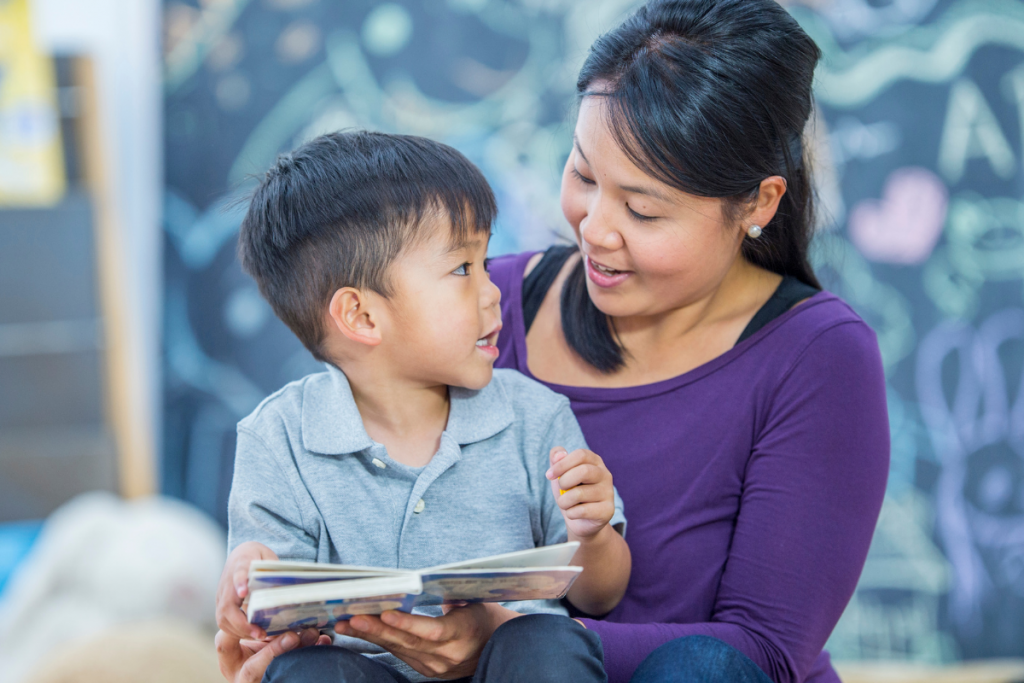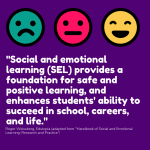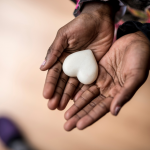COVID’s Impact on Early Literacy and How You Can Help
What effect did the the COVID-19 pandemic have on children’s literacy?
Studies are showing that many children who were three- four- and five-year-olds at the start of the pandemic in spring 2020 are now struggling with reading. The New York Times recently reported that about a third of children now in early elementary school are “missing reading benchmarks.” The negative impact is worse for children who are Black and Hispanic and learning English.
Why does this matter? Research shows that 90% of the children who struggle to learn to read in the first grade will continue to struggle with reading in the fourth grade, and are four times more likely to drop out of high school. Literacy skills are also associated with lifetime outcomes like employment, income, self-esteem and health.
The early literacy skills children start building in preschool can have an impact on the rest of their lives.
As elementary educators implement strategies — from phonics interventions to small-group tutoring — to support the needs of current first, second, and third graders, there are many steps that parents and educators can take early to help children develop early literacy skills at the infant, toddler, and preschool levels.
5 Ways Parents and Educators Can Help

Reading together is the best way to help children learn early literacy skills like vocabulary, print awareness, narrative skills, phonological awareness, letter recognition, and a love of and interest in books.
Here are five ways that you can make listening to stories more engaging for the children in your life:
- Be familiar with the story — Knowing the characters and plot will make it easier for you to tell the story, rather than just reading the words on the page. Think about how you tell your friends about a funny thing that happened to you — how you pause for dramatic effect or add in your commentary for laughs. The same will work with children! By the tenth time they ask you to read the same book, you will know it pretty well, but reading it yourself before the first time you share it will make it easier to tell the story in an exciting, engaging way.
- Be a voice actor — You may feel silly at first, but silly is great for keeping children engaged! Try to use a different silly voice or accent for each character to help children know who is speaking. Use your tone of voice to help them know what is happening — use a sad, weepy voice during sad moments, sigh with relief when problems are resolved, whisper if someone is sneaking around, and speak louder when a character is angry. If the story contains sounds, use your voice or body to make sound effects: crash! bang! boom! knock! la la la!
- Make connections — Nothing engages children in a story more than seeing themselves in the characters. When characters in the story have the same experiences, interests, or even toys as the children you’re reading to, pause and point out the similarities.
- Ask questions — Ask questions about the story, the pictures, the characters’ feelings, or even how the children might respond in a similar situation. Give children time to respond to your question, but depending on their age, mood, and other factors, they may or may not answer. That’s OK — getting answers is not the point! The point is to prompt children to think and to invite them to be an active participants in the story telling.
- Remember the pictures — Take time to examine the illustrations. You might find that the pictures tell their own story! Ask children if they can locate interesting details, talk about the characters’ facial expression and their emotions, or talk with older children about the illustrator’s color choices and style. Pictures help children focus and encourage them to share observations with you. You can use pictures to ask questions — like “Can you see anything red?” or “What is beside the dog?” or “How many butterflies do you see?”
Bonus tip: Invite an individual child to turn the pages for you; this helps them get involved and also helps them learn how books work.
Find Parent Tips Focused on Literacy in Sparkler
You can find out more about early literacy, and find tips you can share with the families you serve in Sparkler.
Parents can click on Tips for Adults on their app home screen. Providers with dashboard access can visit the “Library” and click on Tips.
Here are the main units focused on literacy that you can share:
- Reading Aloud to [Child]
- Words: Stories
- Words: Sounds and Letters
- Words: Expressing our Ideas
- Words: Representation
Find Communication Play Activities in Sparkler
Parents can tap on Play on their app home screen to find fun activities. Providers with dashboard access can visit the “Library” to find activities they can share.
Babies
- Reach for the Stars (language comprehension): Let’s play a game! I’ll help you slowly stretch your arms or legs up and say, “Up, up, up!” in a high voice. Reach for the stars, [Child]! Now, let’s move your arms or legs down and say, “Down, down, down” in a low voice. Let’s do it again! Up, up, up! Down, down, down!
- Do You Hear What I Hear? (language comprehension): There are sounds and music all around us: in the store, on the bus, and on the radio! As we walk or do errands, let’s listen! Do you hear the car horn beeping? Do you hear the people talking? Do you hear the music in the grocery store? Let’s make our own music while we are walking: “La, la, la!”
Toddlers
- Willaby Wallaby (Find the lyrics here: https://genius.com/Raffi-willoughby-wallaby-woo-lyrics) (Expression, sounds and letters): Let’s sing “Willaby Wallaby” to get a laugh and practice our rhyming skills. Willoughby walliby wee, an elephant sat on me! Willoughby walliby woo, an elephant sat on you…Can we rhyme our own names into the song? Our new verses are funny!
- Roll, Toss, Bounce! (language comprehension): Let’s pass a ball back and forth! Listen for my words. I’ll say, “roll,” “toss,” or “bounce” to let you know how to pass the ball to me. I’ll pass the ball back to you the same way. Let’s keep going!
Littles
- Where’s My Name? (Letter recognition): Let’s write your name in big letters on a sheet of paper. Let’s cut out each letter and count them. Now, close your eyes while I hide the letters around the room. Time to search for the letters! Let’s count them as you go. When you find them all, let’s put them together to spell your name again!
- A Book About Me! (Expression, Stories, Sounds and Letters, Comprehension): Who’s in OUR family? What do we love doing together? Let’s make a book all about you and our family! Let’s gather (or take) some pictures of you and our family. We can take photos, or we can draw or cut out pictures that represent you, your favorite things, and our family’s culture. Let’s fold the paper in half to make the front and back covers of our book. What will the title of your book be? On each page, let’s tape, glue, or draw pictures. Now, let’s add words! When we’re done creating each page, let’s use staples or string to bind our book together. Now we can read our book and talk about the part of your identity that each picture represents.


